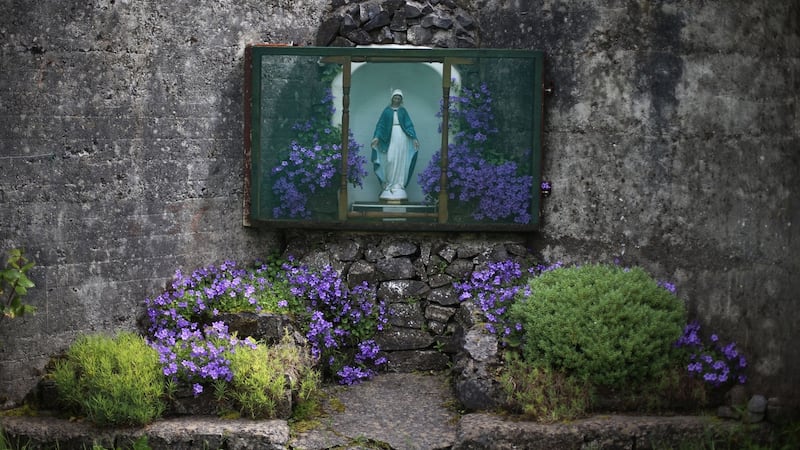Some people know more about the burial of children at the mother and baby home in Tuam than was provided to a Government investigation, the Minister for Children has said.
On Wednesday, Katherine Zappone published the fifth interim report from the Commission of Investigation of the Mother and Baby Homes..
“The Commission states that it is clear that many of the children who died in the Tuam Home are buried in the underground chambers,” at the site, a statement from the Department of Children said.

The report states that these chambers were not a recognised burial ground or purpose-built burial chamber and that it “did not provide for the dignified interment of human remains”.
However, it also said there “is little basis for the theory that rather than having died, the children were ‘sold’ to America”.
Speaking at a press conference in Government Buildings, Ms Zappone said there is “”no evidence whatsoever that could support that theory”.
On the belief people may not have provided information to the Commission of Investigation, Ms Zappone said: “They effectively believe that there must be people in Tuam that know more about burial arrangements.
“There is still more information out there and they would like to know.”
‘Legitimate’
The report makes a number of findings in relation to the burials at the Tuam home, whose past was uncovered and publicised by local historian Catherine Corless. The Glenamaddy workhouse had its own burial ground, and the report finds that 79 children who died there are most likely be buried on the site, however there is no burial register available for the institution and cannot be verified.
Of the 802 children buried at Tuam, a “significant” number were “legitimate” children who were accompanied by a parent.
Media reports and previous findings have often cited a sewage tank on the grounds of the Tuam home, where the bodies of young children and babies were buried, the report’s finding states that this was not in fact a sewage tank, but a second structure with 20 underground chambers.
However, the report states that the initial use of this structure is unknown, it could have been used for treatment of water or containment of sewage.
The commission states that it is clear that many of the children who died in the Tuam home are buried in these underground chambers, dating back to 1937.
It added that these chambers were not a recognised burial ground, were not purpose built to be used as a burial site, and did not provide for the “dignified interment of human remains”.
Children who died in Tuam before 1937, are unlikely to have been buried in the chambers, but in the already existing memorial site on the grounds.
The report has also found that the burial ground may extend beyond the existing memorial garden.
Other institutions
The Government statement added that the report also examines the burial practices in a number of other institutions including Bessborough, Bethany Home, Castlepollard and Sean Ross Abbey.
“In the case of Bessborough, the Commission found no physical or documentary evidence of systematic burials within the grounds, but considers that it is highly likely that burials took place there. “
It said the commission did not consider it feasible to excavate the full 60 acres involved, or the rest of the 200-acre estate on which there has been extensive building work since the institution closed.
It noted that in Sean Ross Abbey, there is a designated child burial ground in the grounds of the institution. “The Commission has undertaken a geophysical study and subsequently a test excavation of the site and the results of this excavation are currently being examined. The Commission will report on this in their final report.”
The report also contained heavy criticism of Galway County Council.
“All the residents of the Tuam Home were the responsibility of the Galway and Mayo County Councils. It seems to the Commission that responsibility for the burials of deceased children with the local authorities and Galway County Council had a particular responsibility as the owner of the institution.
Surprised
“The Sisters of Bon Secours who ran the Tuam Home were unable to provide any information about the burials there.
“The Commission is surprised by lack of knowledge about the burials on the part of Galway County Council and the Sisters of the Bon Secours. Galway County Council members and staff must have known something about the manner of burial when the home was in operation.”
The report says the council’s board of health and its sub committees sometimes held their meetings in the home.
“Employees of Galway County Council must have known about the burials. County Council employees would have been in the grounds of the home quite frequently as they carried out repairs to the building and possibly also maintained the grounds.
“It seems very likely that Galway County Council must have been aware of the existence of burials when they were planning the Athenry housing scheme in 1969.” – Additional reporting: PA








